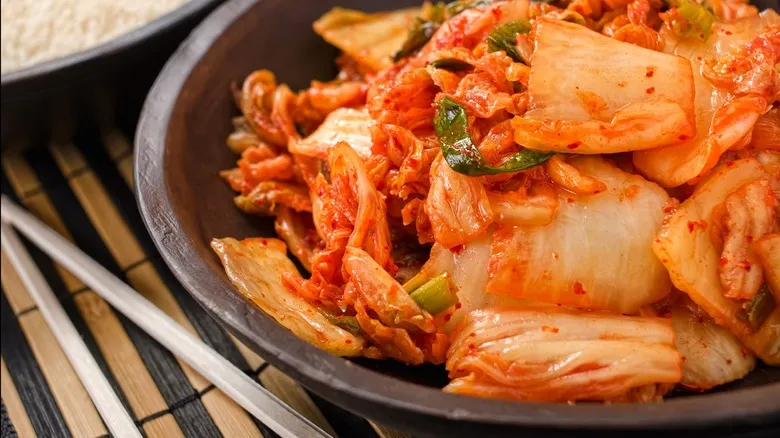Tips for preparing cabbage for tongbaechu kimchi
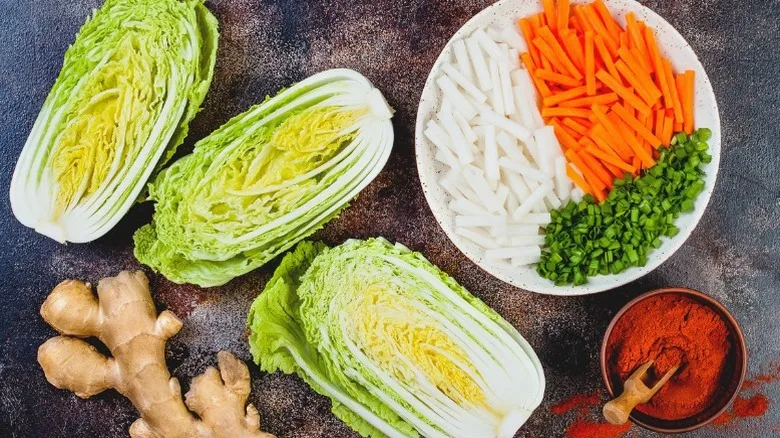
Tongbaechu means "whole cabbage," and it is the key vegetable for making kimchi. The preferred variety is napa cabbage, which has an elongated shape and a white stalk, unlike the round, dark green cabbages. Napa cabbage is sweeter, and its stalk offers a firm, crunchy foundation for the kimchi paste. After chopping it into chunky pieces measuring 1 to 3 inches, the next step is to salt the cabbage. With your ingredients prepped, you can begin the process.
Chef Sungchul Shim advises that you should rinse the cabbage after salting to eliminate any excess salt. Gently pat the leaves dry to prevent the paste from becoming watery when applied. "Start with the outer leaves and work your way inward, spreading the paste evenly on each leaf," he recommends. "Use gloved hands to gently massage the paste into every crease for complete coverage."
Adjusting kimchi flavor
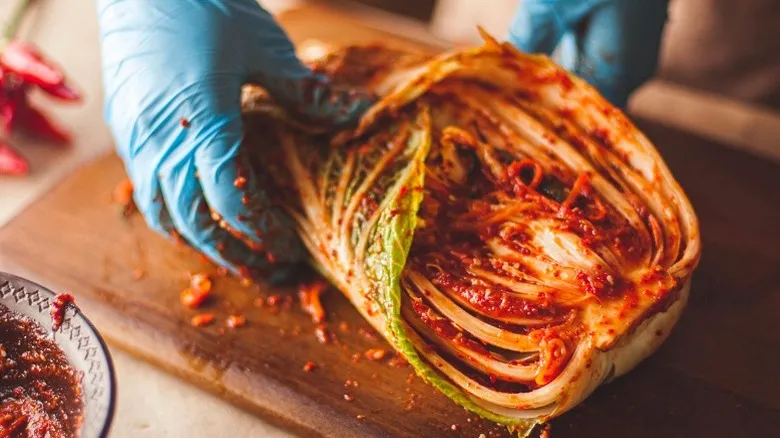
The kimchi paste consists of minced garlic, grated ginger, gochugaru, sugar, fish sauce, and water. Often, additional vegetables such as julienned carrots and sliced green onions are incorporated for added texture. Feel free to adjust the quantities to suit your taste, as this will influence the final flavor. These ingredients are raw, allowing you to sample them as you prepare.
If your kimchi turns out to be a bit too spicy, Chef Sungchul Shim suggests adding slices of crunchy radish, pear, or extra cabbage to help balance the heat during fermentation. On the other hand, if you prefer a spicier and less sweet flavor, he recommends increasing the amount of brined vegetables or salt. He noted, "After fermentation, you can use overly spicy or sweet kimchi in stews, soups, or fried rice to tone down the flavors."
Ideal container for fermenting kimchi
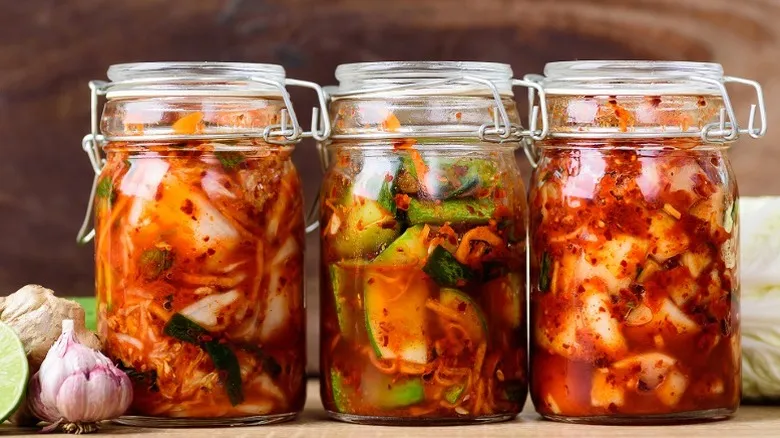
Chef Sungchul Shim recommends using a traditional clay onggi as the best container for fermenting kimchi. The onggi, a classic clay jar, is particularly suited for this purpose due to its ability to facilitate air circulation, although it's not strictly necessary.
To ensure a smooth fermentation process, kimchi should be kept in an airtight container. Glass jars with a suction lid can serve as a suitable alternative to the onggi. Just remember to place a weight on top and monitor for any overflow caused by fermentation gases.
For optimal storage temperature, fresh kimchi should ferment at room temperature for one day. This helps speed up the fermentation process and creates the ideal environment for microbial cultures. After the initial day, it's best to move the jar of kimchi to the refrigerator, where it can maintain its peak quality for about a week.
How to tell if your kimchi is fermenting properly
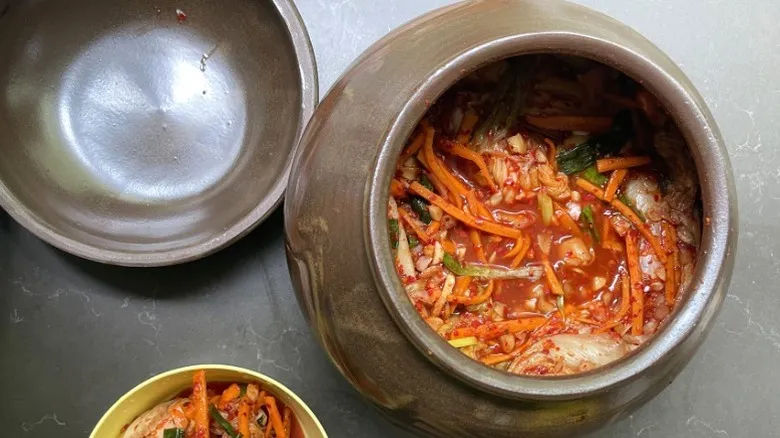
"A slimy texture, unpleasant smell, or black mold are obvious indicators of spoilage," noted Sungchul Shim. He asserts that a proper fermentation process is marked by tiny bubbles, a tangy scent, and a slightly translucent look in the cabbage. On the other hand, it may also develop a harmless white, yeast-like film on the surface, which he mentioned can be easily removed and discarded.
Although kimchi is a fermented food rather than a pickled one, it should still have a very mild vinegary aroma, even without vinegar as an ingredient. This occurs because the bacteria convert carbohydrates into lactic acid, resulting in the desired sour taste. The microbial culture generates carbon dioxide, causing the liquid to bubble as a sign that fermentation is taking place.
Knowing when kimchi is ready to eat
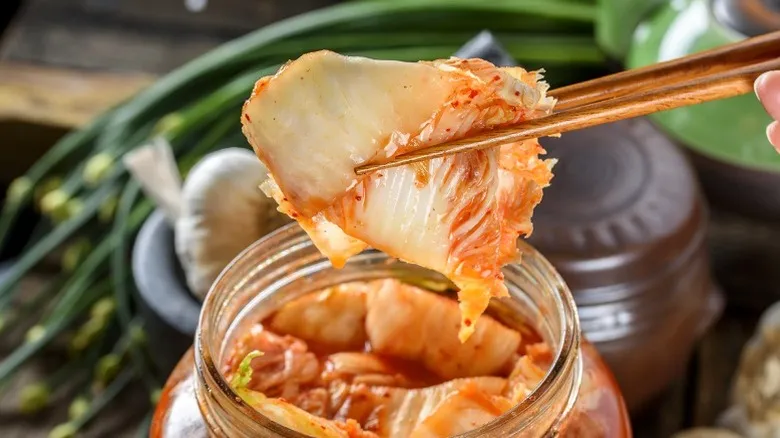
A common mistake beginners make when preparing homemade kimchi is allowing it to ferment for too long. This can result in a mushy texture instead of the desired soft and crunchy consistency. The flavor may become overly intense, often tasting too sour or vinegary for some. If your kimchi has fermented beyond your liking, you can repurpose it by adding it to a stew or creating a pancake-like dish known as kimchi jeon.
For most people, the ideal fermentation period for kimchi is around three to five days, but this can vary based on personal taste. At its best, kimchi should have a tangy flavor, a hint of sourness, and a firm texture. While it’s delightful on its own, it also makes a fantastic side dish or ingredient to complement other meals. You can use it to enhance noodles and rice or create a fusion dish by pairing it with tacos or sub sandwiches. With this expert guidance, you can enjoy this beloved Korean dish at home without any concerns.
Recommended

Why Canned Lychee Is A Must-Buy According To Jet Tila

For The Crispiest Fried Chicken, Try This Flour Swap
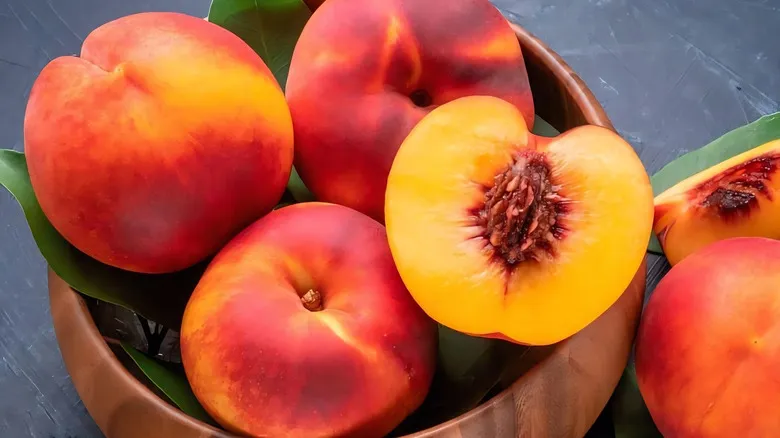
Here's How To Pit A Peach Without Making A Mess

The Frozen Veggie To Add To Ramen For An Easy Instant Upgrade
Next up

